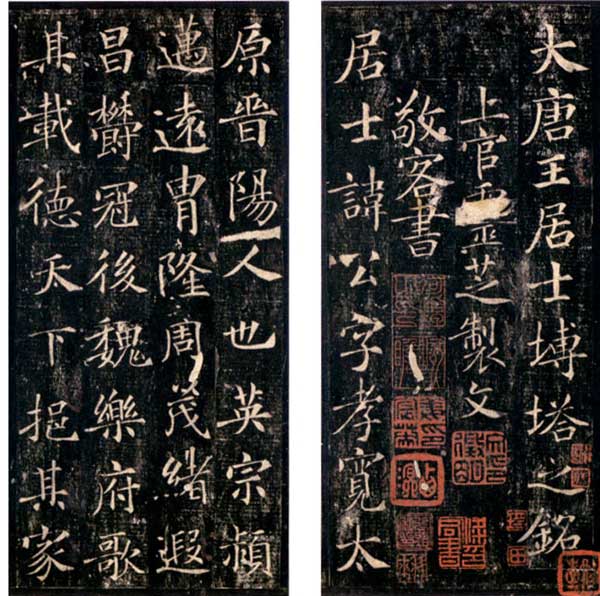The deeds of "respecting guests" are unknown, and they come from the You clan in Hedong. Wang Shu of the Qing Dynasty wrote in his "Xuzhou Inscription and Postscript" "The name of Jingke did not appear at that time, but his calligraphy was particularly thin and vigorous, which is similar to that of Chu Gong. It is known that there were many people who could calligraphy in the Tang Dynasty, so it was inevitable that they would cover their ears for the giant prince." Qian Yong said: "If you get a piece of paper with only the words on it, you still treasure it but don't put it away. Because of its beauty and power, it has a method between Europe and Chu. Therefore, many scholars have made it a famous monument. It can be seen that the ancients have methods to use with their pens."
Appreciation of Works: Inscription on the Brick Pagoda of the Prince

The "Inscription on the Brick Pagoda of Princes" was buried on October 26, the third year of Xianqing's reign in the Tang Dynasty (658), and was unearthed during the Wanli period of the Ming Dynasty. Written by Shangguan Lingzhi, the official book of Jingke. This stele was known for its elegance and elegance by various calligraphers of the Ming and Qing dynasties, such as Wang Shu and Mao Fengzhi. It was especially highly praised by Ye Changchi's "Yu Shi", with a comment that "nothing is more precious in this world than the Brick Pagoda Inscription".








